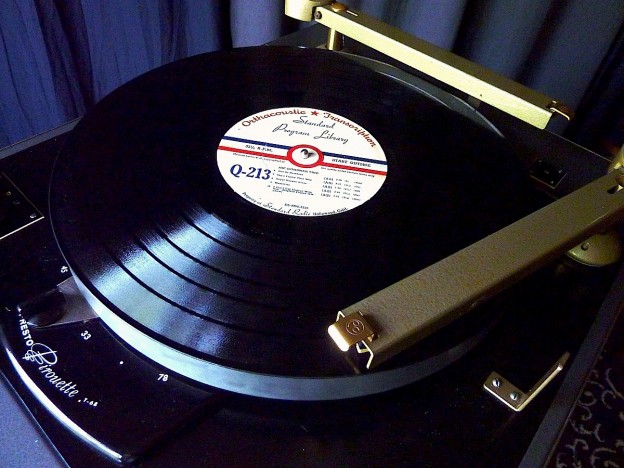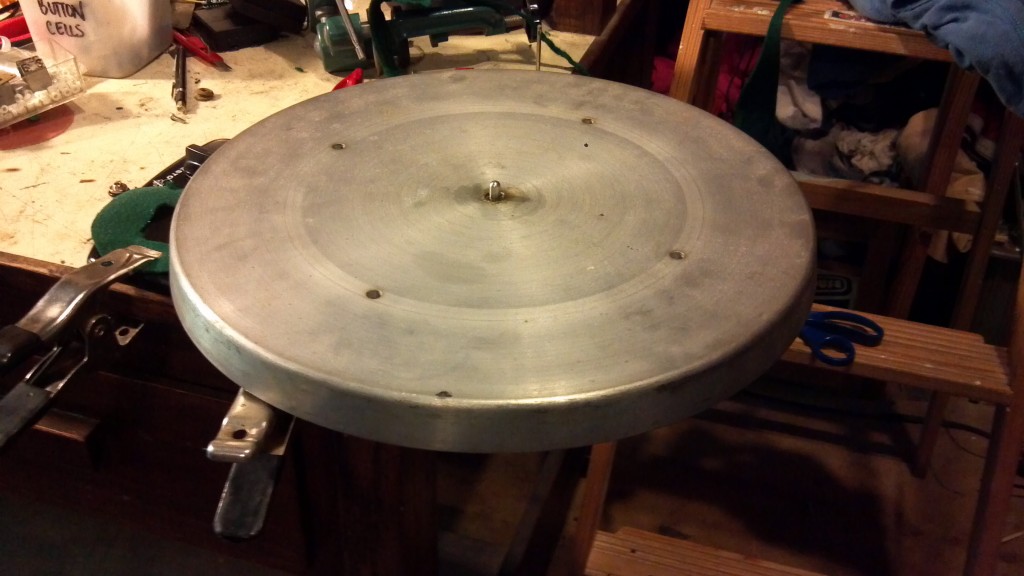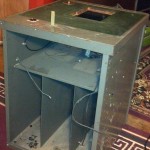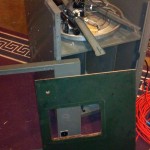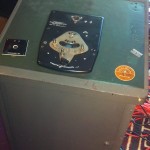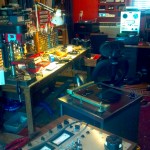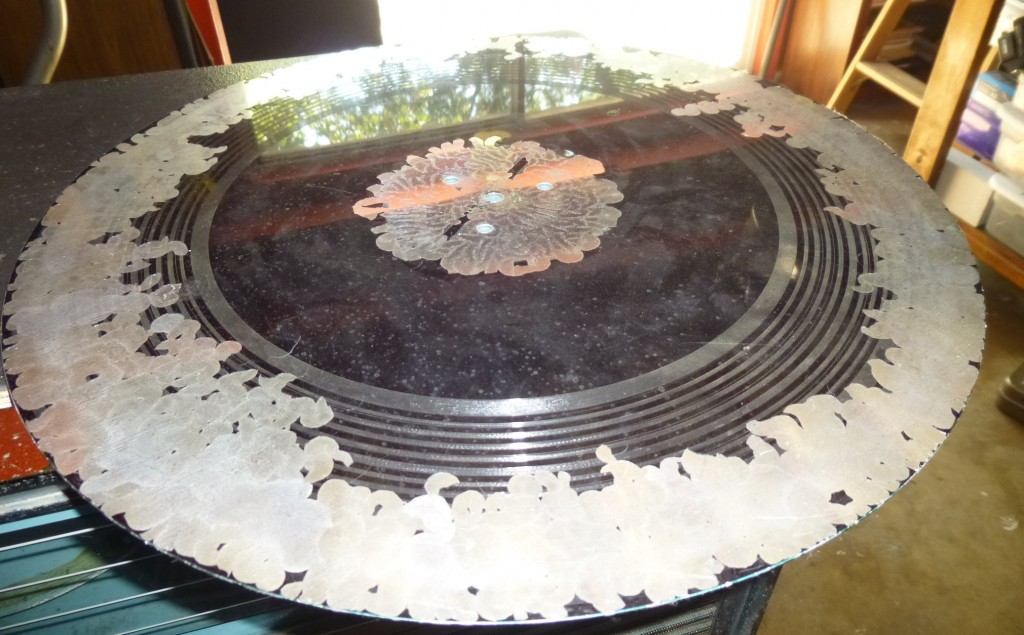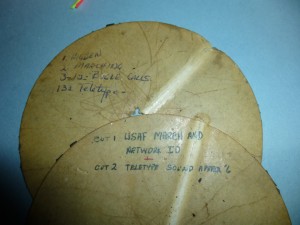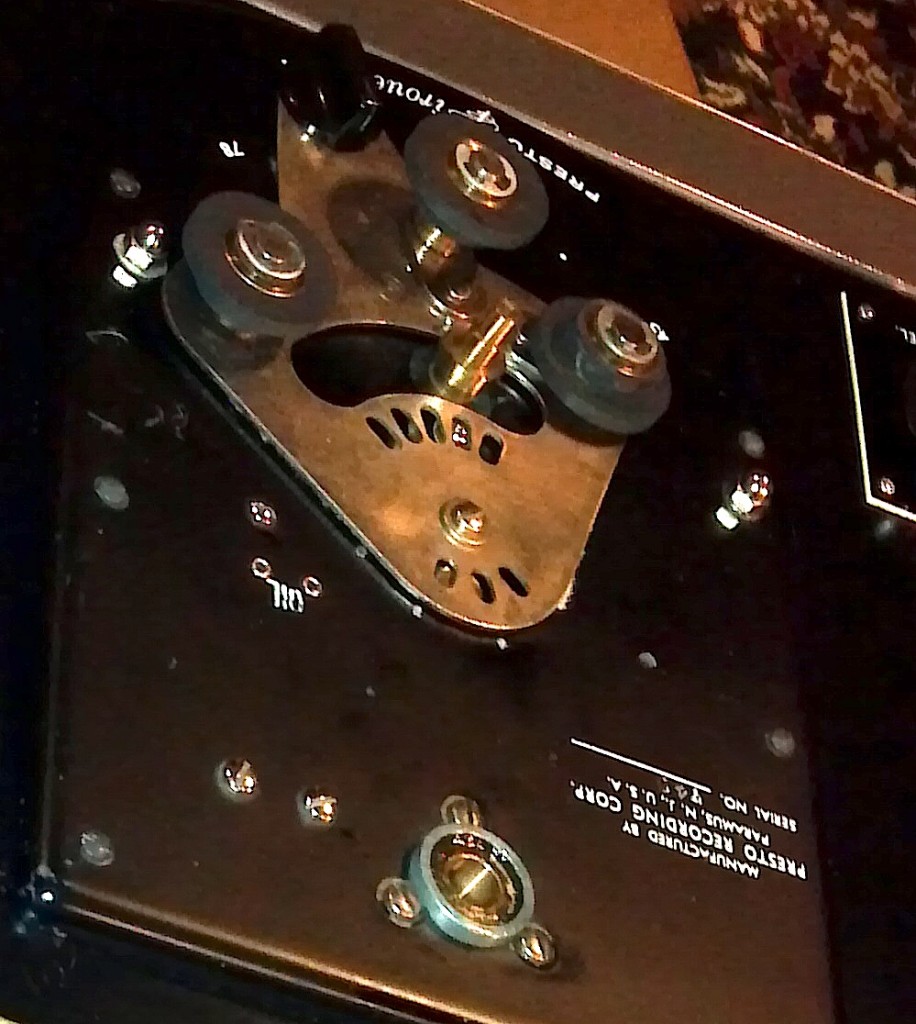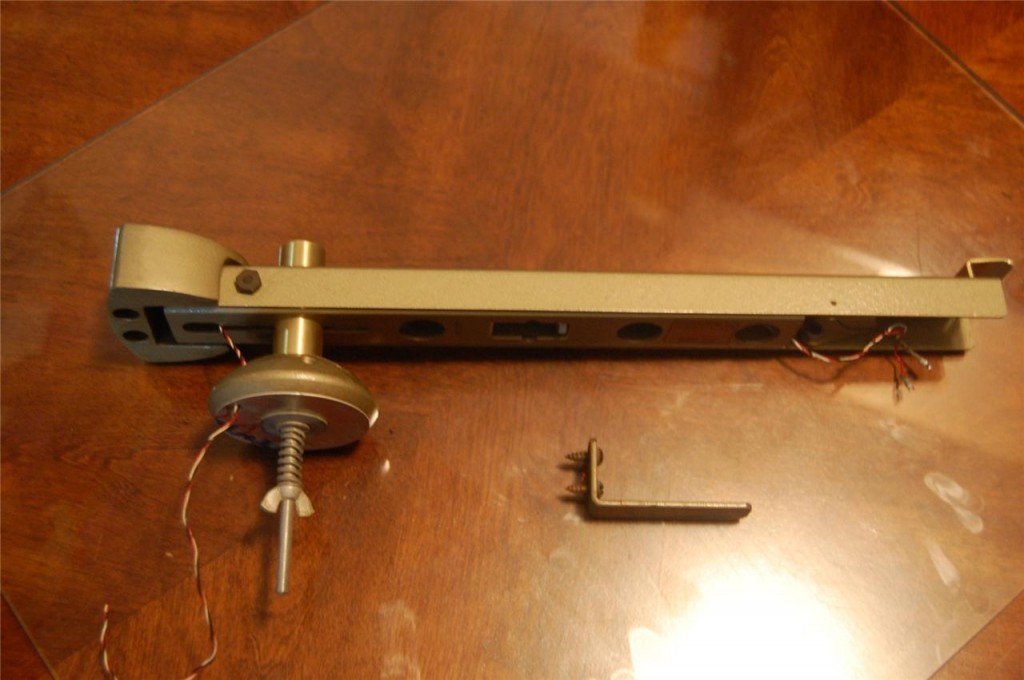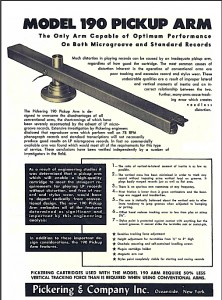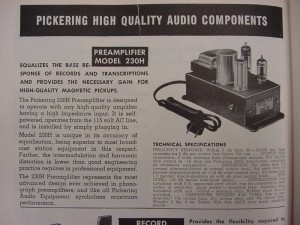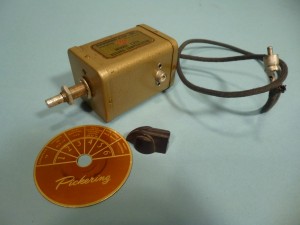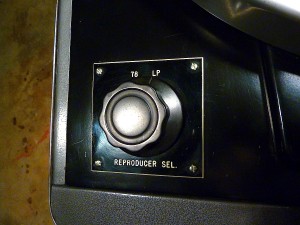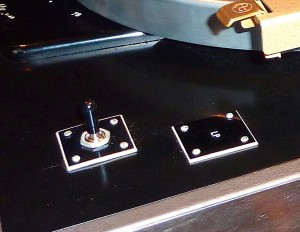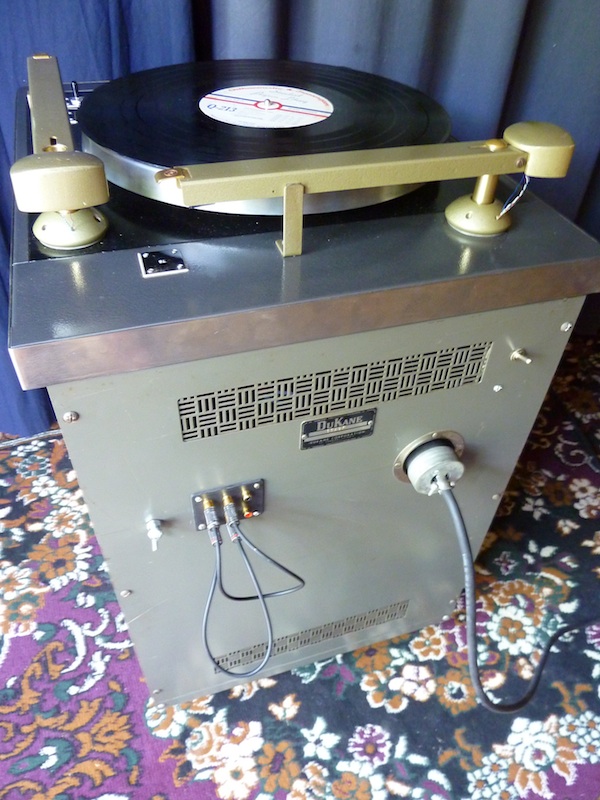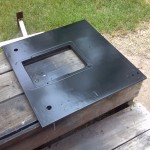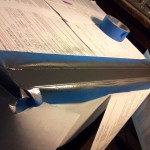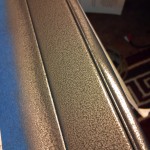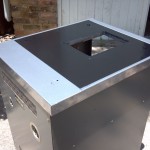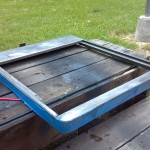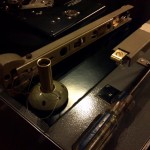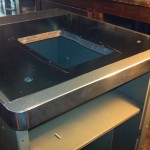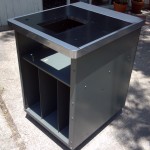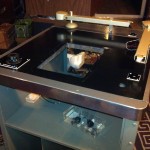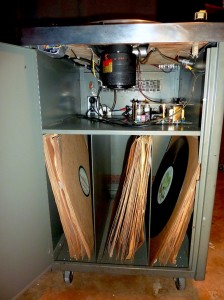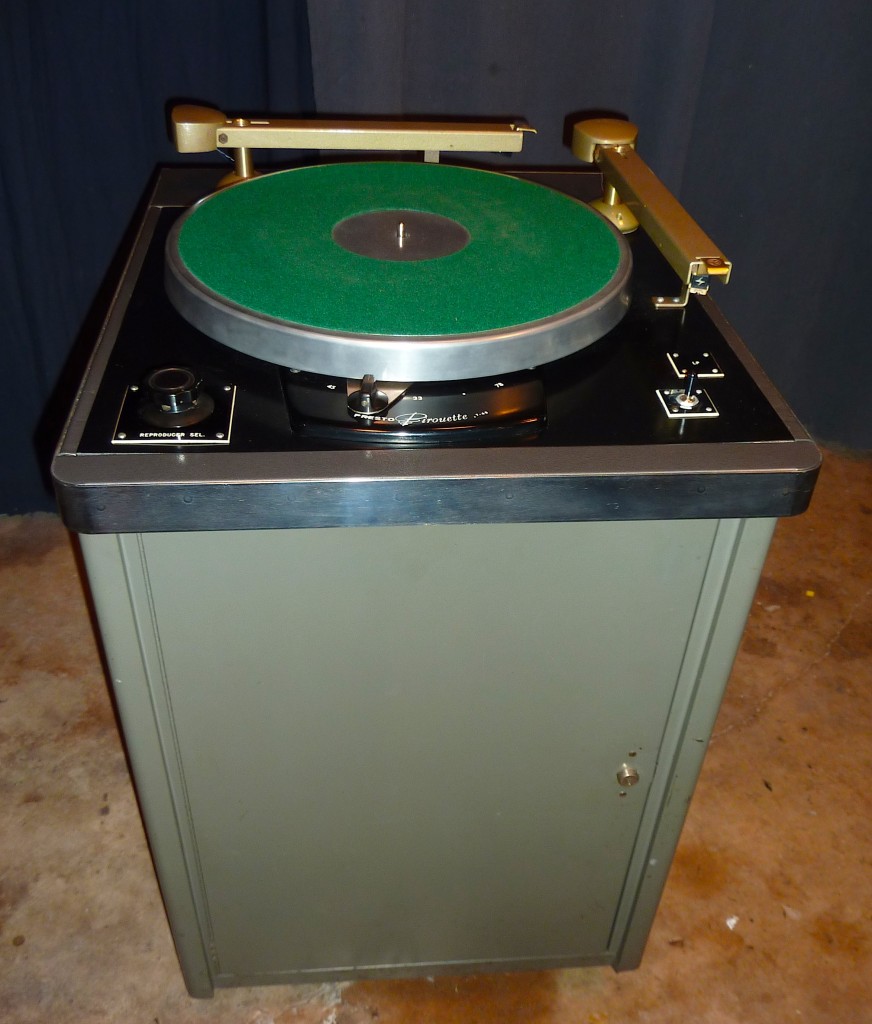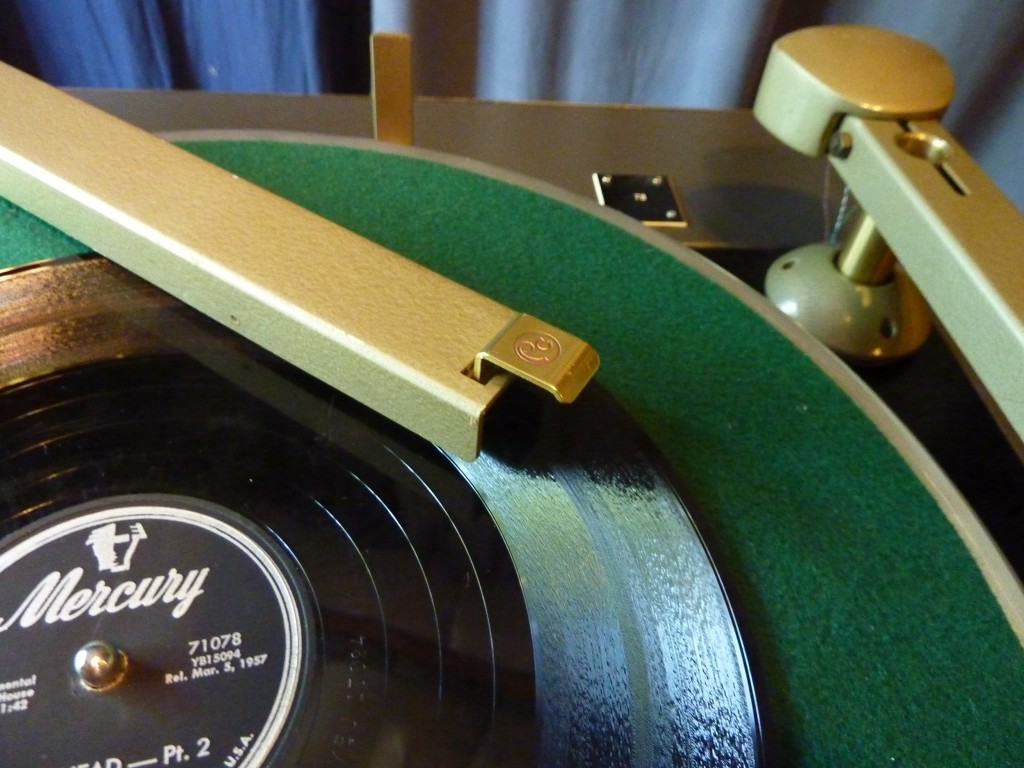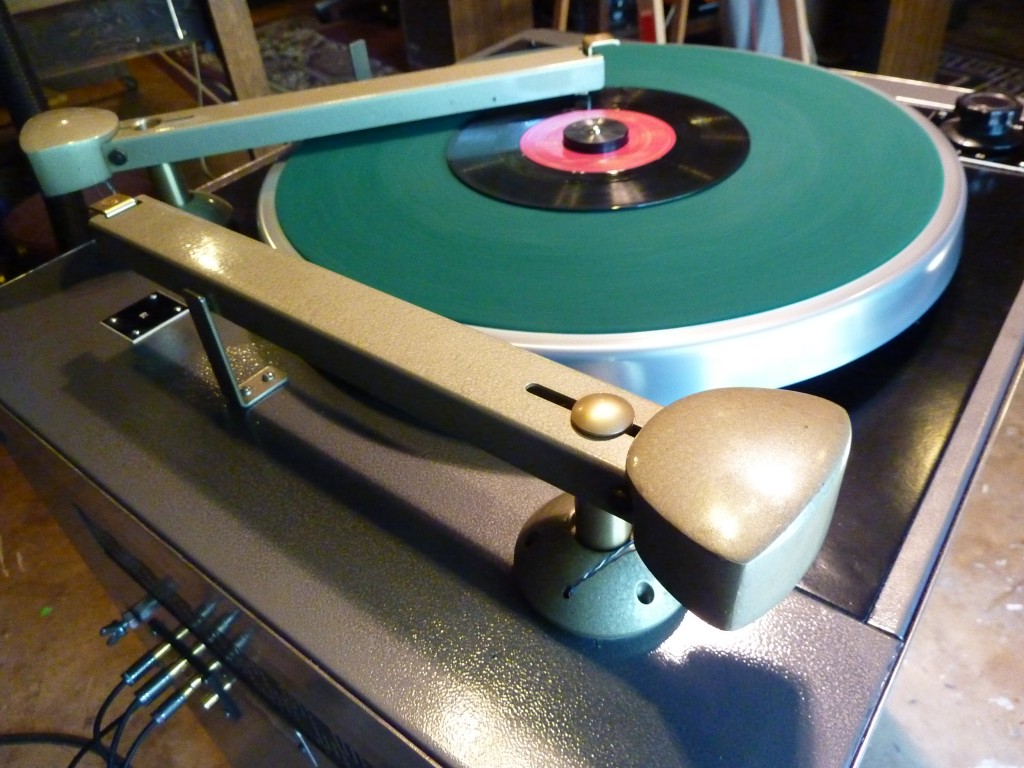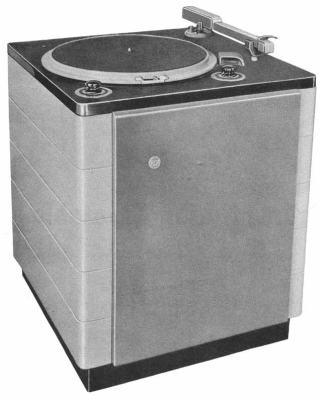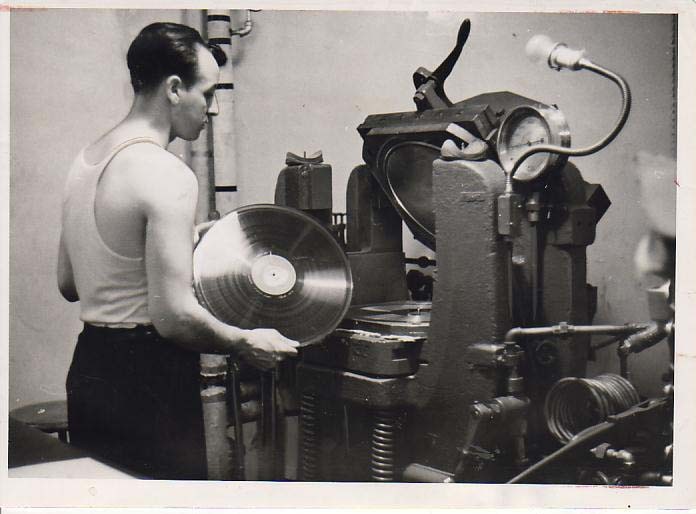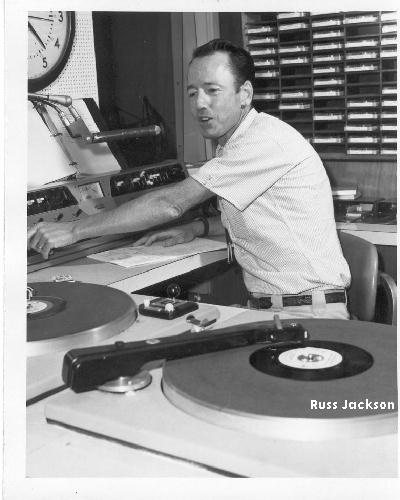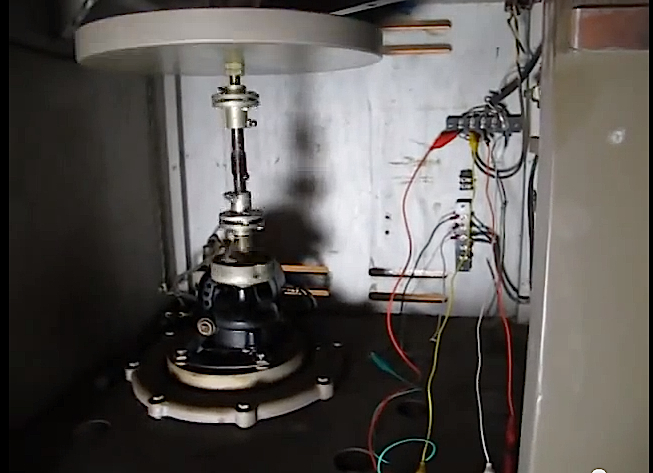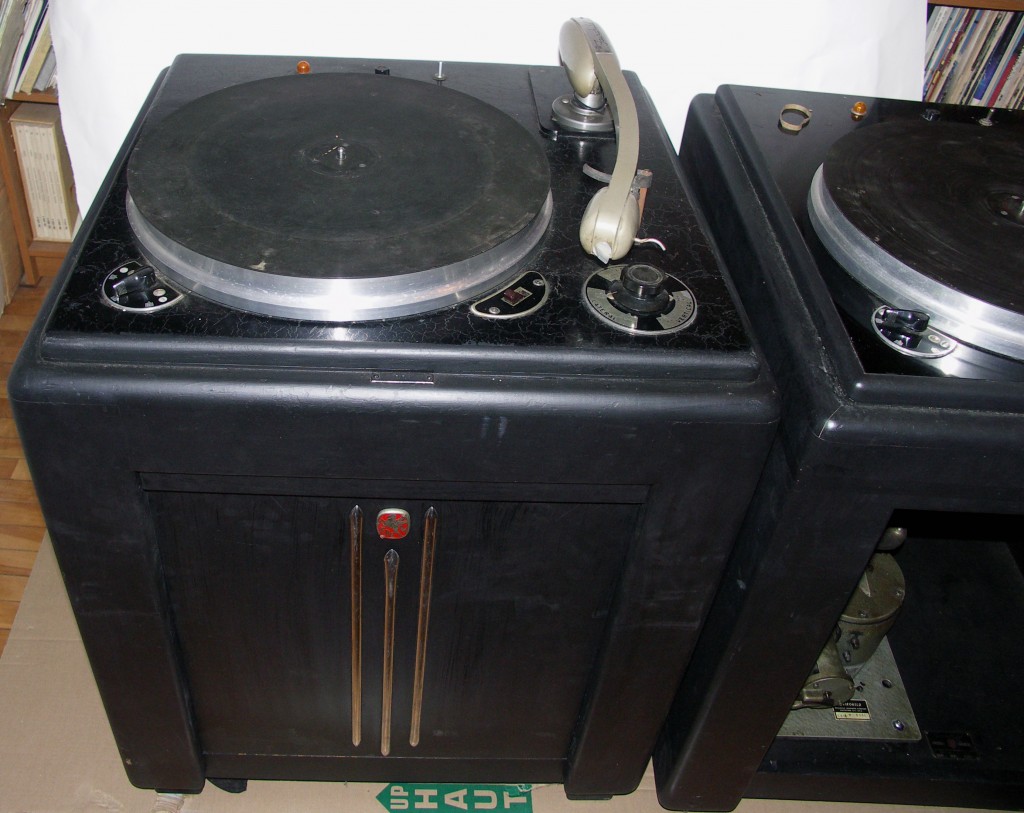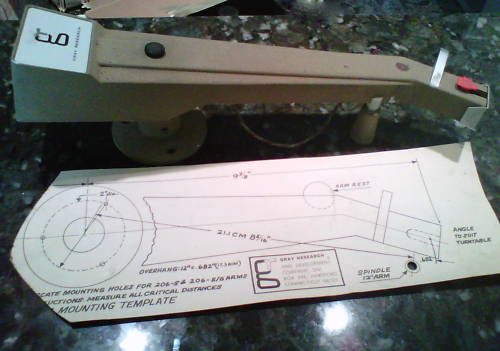About 3 years ago, I saved the pieces of this 16″ transcription player & cabinet from a dusty internment.
(Click the thumbnails above for a larger “before” view). , This Presto T-68 Transcription Turntable with Pickering 190D Tonearms was used at an Air Force base in Fort Worth. Found inside the cabinet was a 16″ acetate record, with the lacquer falling off the aluminum substrate. The disc labels indicated the acetate had various Reveille bugle calls, marching and teletype sound effects. The military base had its own radio station, or perhaps they used these effects over the public address system for PT!
Upon complete disassembly, work started on the motor & start capacitor, with a gentle variac power-up to check for shorts in the windings, or a bad capacitor. It’s an an Ashland Hysteresis Synchronous motor of 1/100 horsepower. after a complete overhaul, the motor ran continuously for a couple of days to observe operating temperature, let the bearings settle in, and discover any latent noise or vibration issues. New motor mounts were installed as well.
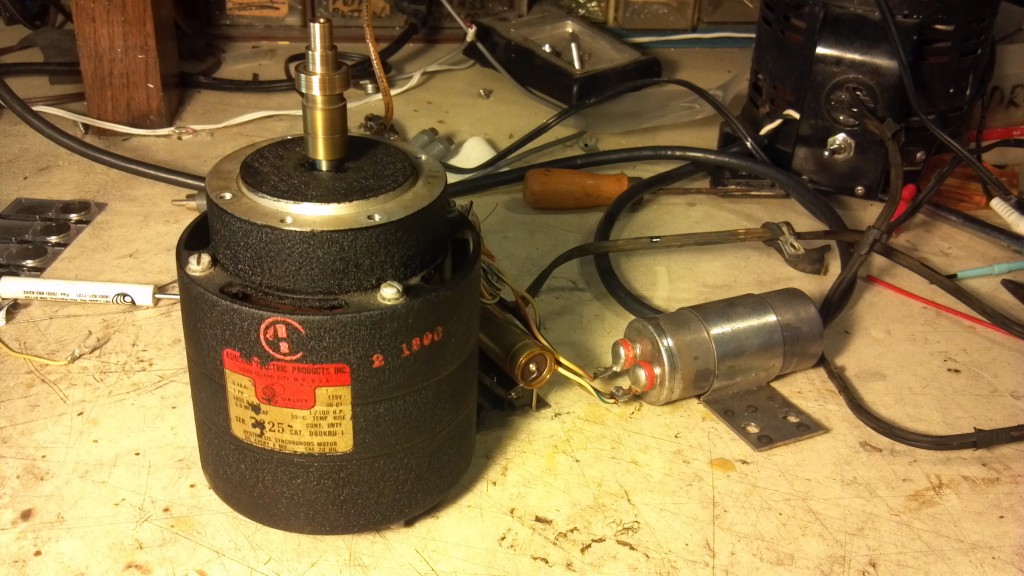
Motor removed for teardown, old lubricant removal, reassemble and re-lubricate. Slow power up with variac.
Three rubber idler wheels transfer the motor’s energy to the platter at 78, 45 or 33 1/3rpm, depending on which plane of the spinning motor shaft is engaged (see photo below).
The existing idler wheels (above) were hardened and crumbling. The brass hubs were re-surfaced by Terry’s Rubber Rollers. The motor and idlers get the platter up to speed in about 1/4 of a platter rotation. Pretty quick, which was important for the operators ability to tightly cue the audio tracks.
The tonearms are type Pickering 190D, originally wired for mono. BTW, Mr. Pickering holds the original patent on the moving magnetic phono cartridge! These tonearms were heralded for extremely low vertical to lateral moments of intertia, and minimal vertical mass. Because of the big swing of a long tonearm, the tracking error is less than 2.5 degrees.
The tonearm’s extremely low head-mass can deftly handle a warped record very nicely. The rear tonearm is intended for a 78 rpm cartridge/stylus. The front arm is for a microgroove cartridge. A top- mounted rotary switch selects which arm is fed to the pre-amp. Before restoration, the signal passed through a Pickering model 132E passive equalizer before being pre-amplified by a mono model 230H Pickering tube preamp.
Both tonearms get re-wired for stereo, no small task with hair-thin oxygenated tonearm wire. The rotary switch was replaced to enable stereo switching between tonearms. The mono Pickering equalizer was removed(which will fetch about $100 on ebay) and the resulting empty hole with a bat-handle power switch for the motor, a more practical use of the space. The turntable previously was powered-up when the speed selector was enabled. A black switch mounting plate was created to match the other label plates on the plinth.
A new stereo tube preamplifer is now required inside the cabinet, so a Little Bear Stereo Valve Preamp was shipped in from Hong Kong. (below)
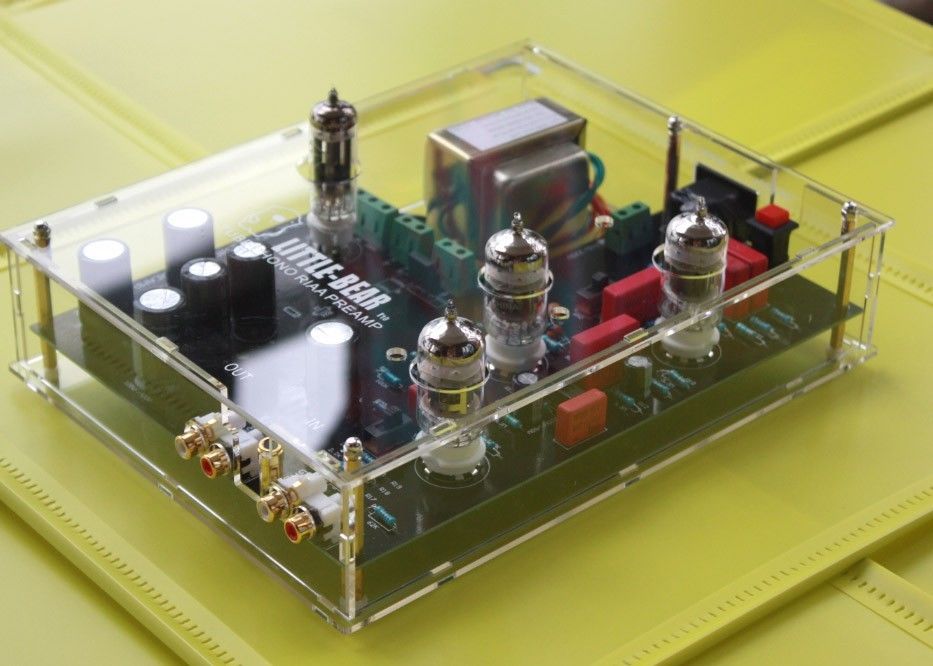
The popular Little Bear stereo tube pre-amp from Hong Kong. Very nicely designed!
To allow the user to select the internal or an external preamp, An RCA patch bay is added on the rear cabinet panel. Also shown is the ground lift switch, power connector and chassis ground terminal.
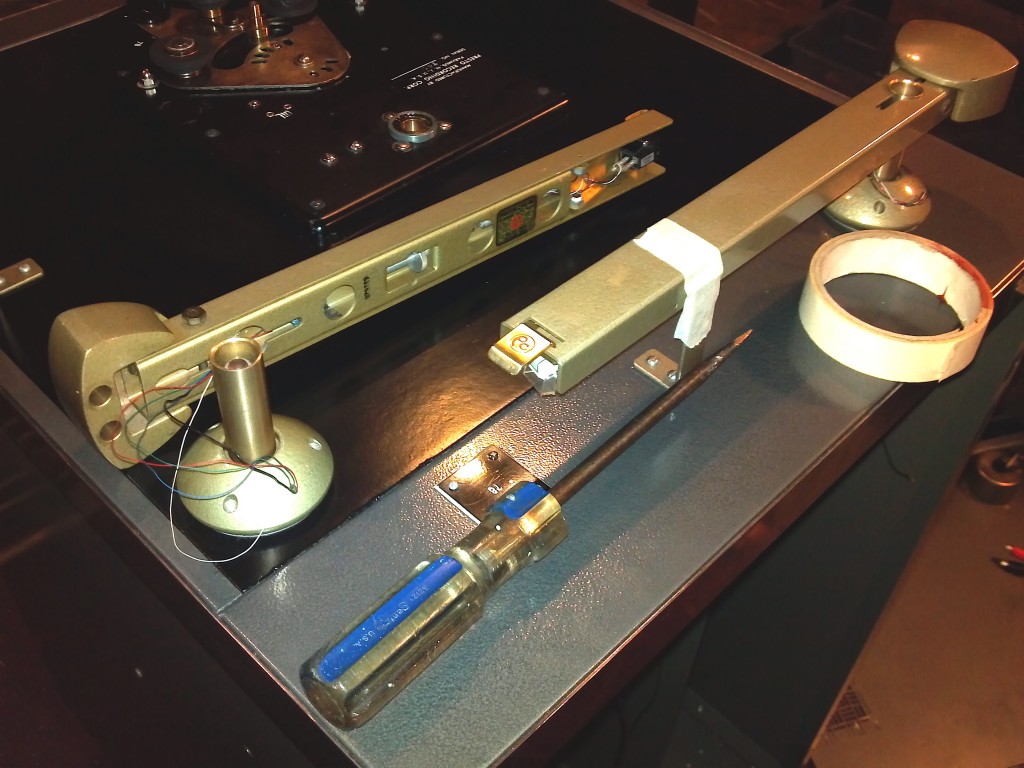
Assembly and wiring of tonearms. Individual Channel signal/ground wires eventually made into twisted pairs for hum suppression.
The cabinet was a challenge, especially the plinth. The 3/4″ plywood base surface was covered in a thick, ancient, funky, dull- green laminate. The surrounding metal was painted industrial grey with a good deal of chipping & corrosion. The metal surrounding the laminate was refinished in hammer-tone grey . The funky-green clashed with the other colors, so the wood top was refinished in solid satin black. The platter had plenty-enough green in it after the re-felting, which is done with felt, spray adhesive, and careful lathe-style trimming with a razor. The plinth’s vertical edges were stripped down to the bare metal and polished to a bright shine, almost chrome. The polishing process was observed in a motorcycle restoration shop, and has been sucessfully used here on lots of projects. (Enlargable thumbnails below)
The Presto- DuKane cabinet, preamp and associated wiring came together as pictured. The tonearms get fitted with Shure M91ED cartridges, the rear cartridge with a 78rpm stylus. The unit is extremely well grounded, including the motor shell, and cabinet ground is independent of signal ground. Wether using the internal or an external preamp, there are no hum issues. As a precaution, a ground lift switch was added to the rear panel. Power lines are capacitor bypassed at the entry points and at the power switch. (below pics are enlargeable)
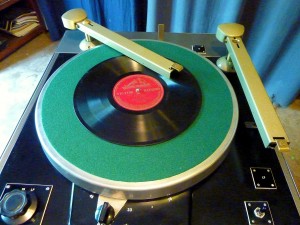
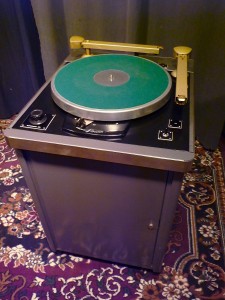
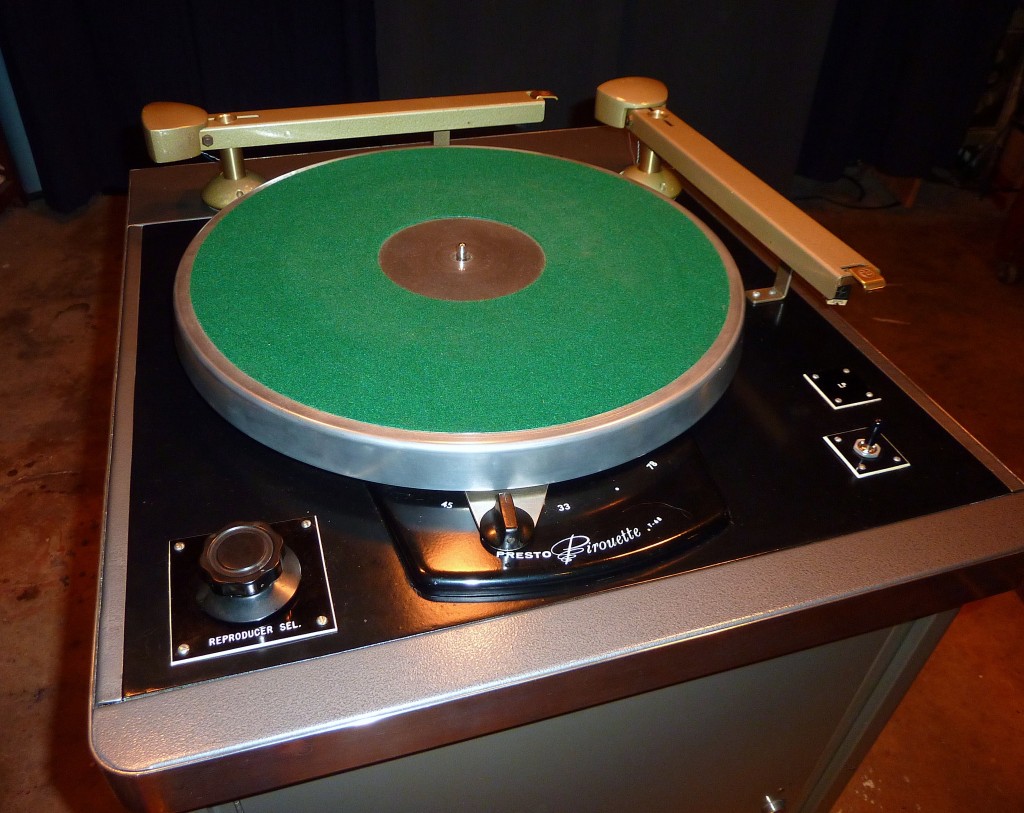
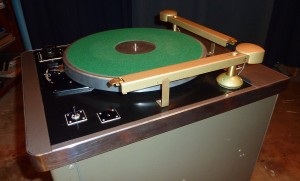
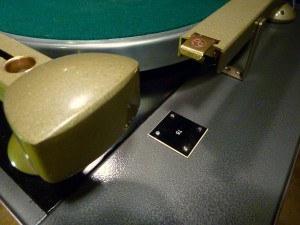
The table adds a special allure to vinyl activities. A heretofore ignored pile of 78 rpm records have provided some very interesting listening! It’s the record industry in its infancy. Various recording techniques can be discerned, qualities, different equipment eras, groove depth variances, etc can all be heard.
There’s a million cheap 78s, lps and 45s still floating around out there, in thrift stores, estate sales, and flea markets. Many found 78s have never been played, and those make for remarkable listening. Back in the day, the commonly used steel needles would destroy a 78 after 20 plays. Many outstanding shellac records are still out there, They are remarkable examples of recording skills and standards through the era.
The 60’s produced some remarkably well mastered LP’s as well. I particularly like the Command 35mm series, which are still in plentiful supply at the above mentioned sources. See you at the Goodwill!
MORE ABOUT TRANSCRIPTION TURNTABLES….
In the US, professional transcription turntables were primarily made by RCA, Gates, Fairchild, Presto, and McCurdy in Canada. They also required a separately purchased “transcription” tonearm, about 3″ longer than a standard tonearm. The extra “swing room” these arms create also reduce stylus tracking error, especially on 7″-12″ records.
I’d been searching for a 16″ transcription turntable for many years. These tables are a unique and dissappearing part of broadcasting history. Unlike a 12″ platter, they can accommodate vintage 16″ transcription vinyl records, popular in the radio industry through the 50’s, 60’s, and 70’s. Amazingly, for their size, these records only contain about 15 minutes of program material per side! That’s because the grooves are spaced far apart. The discs typically cannot fit on a standard 12″ turntable platter without hitting the tonearm base. The US Armed Forces and Veterans Administration used these records extensively to distribute their radio programs. The records also were popular for distributing library music, jingles and commercials.
The big turntables often came mounted on a cabinet, the size of a dishwasher. The earliest tables used this space for a complex, gear driven, flywheel-stabilized motor, These motors provided the necessary torque required for slip-cueing records and fast startup rotation. Eventually, the torque came from smaller, hysteresis sync motors with idler/puck drives. By the early 60’s these became the standard turntable design for radio/tv stations. In the early 80’s, Technics Corp. introduced powerful, direct drive, crystal controlled motors. They were adopted quickly by radio stations and used until CD’s replaced vinyl entirely…
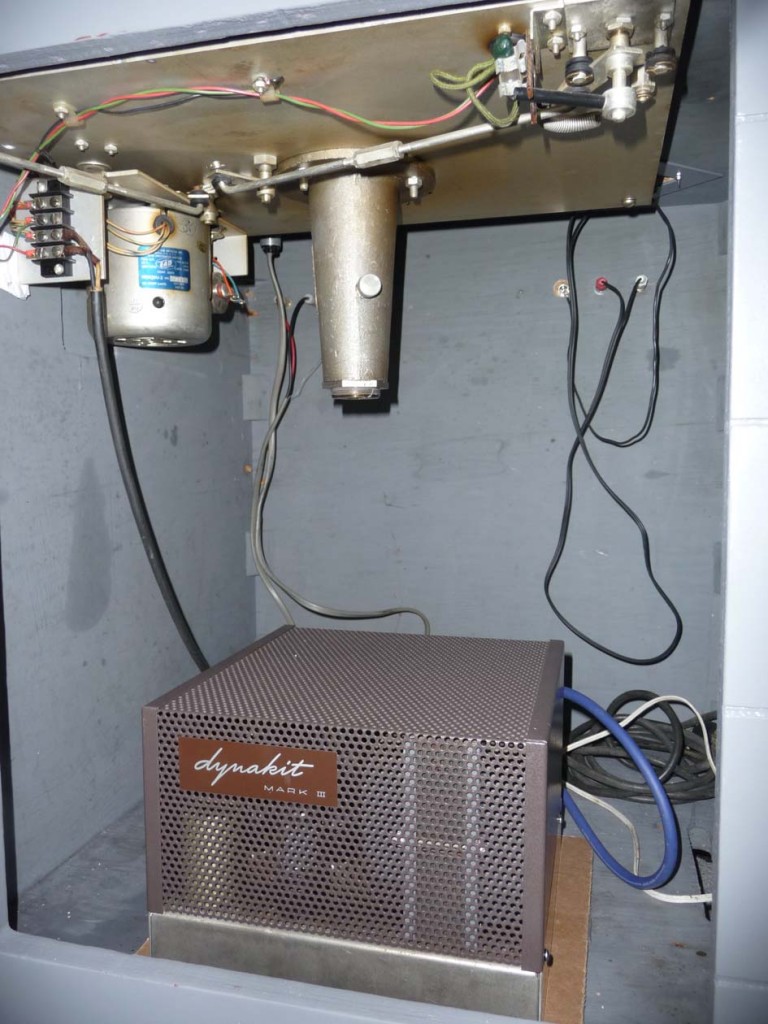
A more recent underside of a transcription turntable, the RCA BQ-2B. I do not recommend placing a tube amp in the cabinet!
If you’ve got room in your listening area for one of these behemoths, you’ll find them few and far between, and priced outrageously. And that’s before the freight shipping required to send to your place. The most current and popular transcription unit is the Gates CB-500 , and the cabinet (if you can find it).
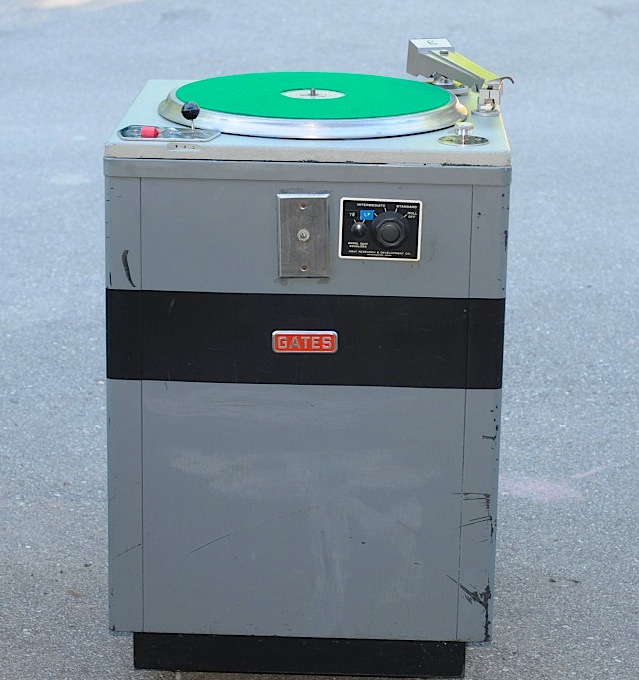
The Gates CB-500 and cabinet. The Holy Grail? The front panel controls are a sloppy, abortive add-on.
Personal Story Time: In my college days of Radio and Television (circa 1980), the school had a large, 3 camera TV Studio, with a huge cyclorama curtain surrounding the walls. One day, while scrounging behind the curtain, I found two of the huge RCA transcription turntables, in their massive cabinets. They had the coveted Grey Research Damped Transcription Tonearms, so named, as the arm rode on a layer of oil to isolate it from the turntable’s vibrations. And also to minimize lateral friction. The RCA tables were in deplorable, but restorable condition. Piles of 16″ records cluttered the space around the machines. I had little interest in vintage gear in those days, and forgot about them. 20 years later, I learned l that when the TV studio was renovated into a dance studio, the turntables had been unceremoniously trashed. Truthfully, over 30 years later, I still have lucid dreams about finding vintage broadcast equipment in the bunkers and catwalks of my alma-mater’s fine arts building. – by Pete Verrando

